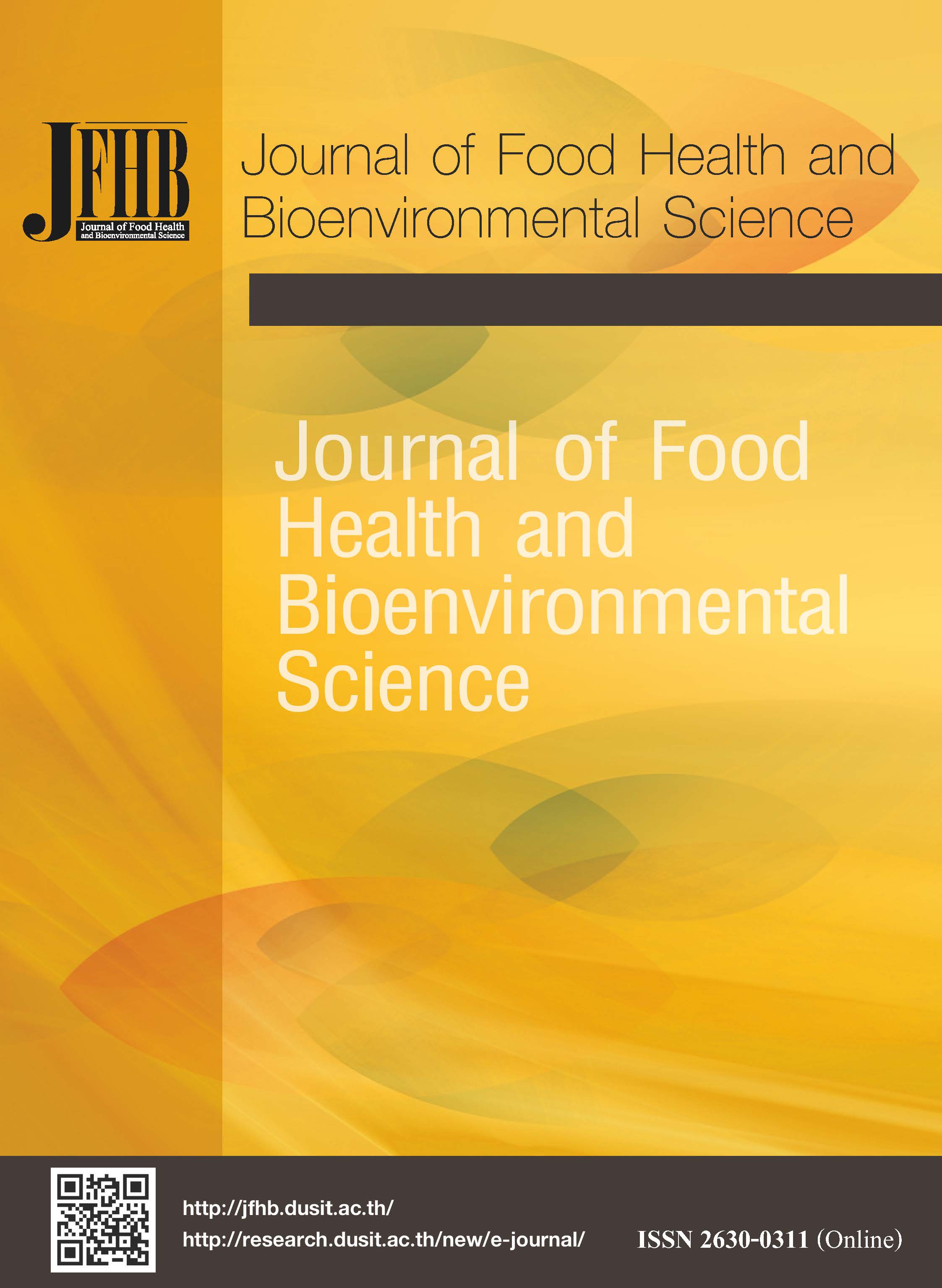A Study of the Optimal Conditions for Extracting and Precipitating Silica from Rice Husk Using the Hydrothermal Method in a Base Medium
Keywords:
Rice husk, Rice husk ash, Silica, HydrothermalAbstract
This research investigated the extraction and precipitation methods of silica from rice husk using hydrothermal treatment under basic conditions. It was observed that by subjecting raw rice husk and black rice husk ash to burnt at a temperature of 700°C for 6 hr raw rice husk yielded 10.68%, while black rice husk yielded 85.40%. The optimal condition for extracting silica is 1 molar of sodium hydroxide at a temperature of 100°C for 6 hr. Silica extracted from raw materials that have undergone acid pretreatment yields a higher quantity compared to silica from untreated raw materials. However, the raw rice husk, burnt raw rice husk, black rice husk ash and burnt black rice husk ash have silica % of 16.20, 77.60, 63.10 and 89.0, respectively. When the extracted silica was analyzed for its physical characteristics using an inverted microscope, it was observed that silica subjected to acid pretreatment exhibits uniformly sized particles. The examination of particle size using the extraction method revealed that the silica particles were smaller than 53 μm and when all extracted silica was analyzed for functional groups using the FT-IR technique, the siloxane group (Si-O-Si) was found in the wavenumber range of 1,090-801 cm-¹. Additionally, the hydroxyl group (-OH) was observed at the wavenumber of 3,400 cm-¹. After conducting Brunauer–Emmett–Teller Analysis (BET analysis) on silica obtained from burnt rice husk and burnt black rice husk ash, both untreated and treated with HCl, it was found that the pore diameter of the extracted silica ranged from 8.14 to 19.15 nm. This suggests that the silica possesses mesoporous characteristics. Furthermore, the acid-leached silica exhibited a decrease in particle size and an increase in surface area. Specifically, the silica derived from burnt rice husk and treated with HCl demonstrated particle size and surface area values that closely resembled those of commercial-grade silica. When studying the effectiveness of silica in adsorbing methylene blue, the findings showed that the extracted silica demonstrates better adsorption capability for methy lene blue compared to commercial silica. The adsorption values ranged from 1302.49 to 1706.35 mg MB/g, representing 65.78-86.17%. From the investigation of the isotherm for methylene blue adsorption with the extracted silica, it is evident that the adsorption conforms to Freundlich model, indicating a multilayer adsorption behaviour. The method of extracting and precipitating silica through hydrothermal treatment under basic conditions proves to be an effective approach for preparing micro-sized silica particles.
References
Ambroz, F., Macdonald, T.J., Martis, V., & Parkin, I.P. (2018). Evaluation of the BET theory for the characterization of meso and microporous MOFs. Small methods, 2(11), 1800173.
Chumee, J. (2011). Preparation of pure silica from rice husk and using as a silica source for synthesis of zeolite (research report). Bangkok: Suan Sunangha Rajabhat University.
Dhaneswara, D., Fatriansyah, J.F., Situmorang, F.W., & Haqoh, A.N. (2020). Synthesis of amorphous silica from rice husk ash: comparing HCl and CH3COOH acidification methods and various alkaline concentrations. Synthesis, 11(1), 200-208.
Jarupan, L. (2018). Increase printing quality with nano silica from rice husks. Retrieved June, 14 2023, from https:// www3.rdi.ku.ac.th/?p=41523
Liu, S., Chen, X., Ai, W., & Wei, C. (2019). A new method to prepare mesoporous silica from coal gasification fine slag and its application in methylene blue adsorption. Journal of Cleaner Production, 212, 1062-1071.
Nzereogu, P.U., Omah, A.D., Ezema, F.I., Iwuoha, E.I., & Nwanya, A.C. (2023). Silica extraction from rice husk: Comprehensive review and applications. Hybrid Advances, 4(6), 100111.
Pengthamkeerati, P., Satapanajaru T., Sananwai, N., Boonrite, A., & Welutung, P. (2018). Extracting silica from biomass fly ash by using alkaline hydrothermal treatment and silica precipitation by using organic acids. The Journal of KMUTNB, 28(1), 175–182.
Pramual, K. (2014). Amine-functionalized silica monolith as a copper ion adsorbent. (Master’s thesis). Silpakorn University. Bangkok.
Downloads
Published
How to Cite
Issue
Section
License
Copyright (c) 2024 Journal of Food Health and Bioenvironmental Science

This work is licensed under a Creative Commons Attribution-NonCommercial-NoDerivatives 4.0 International License.








